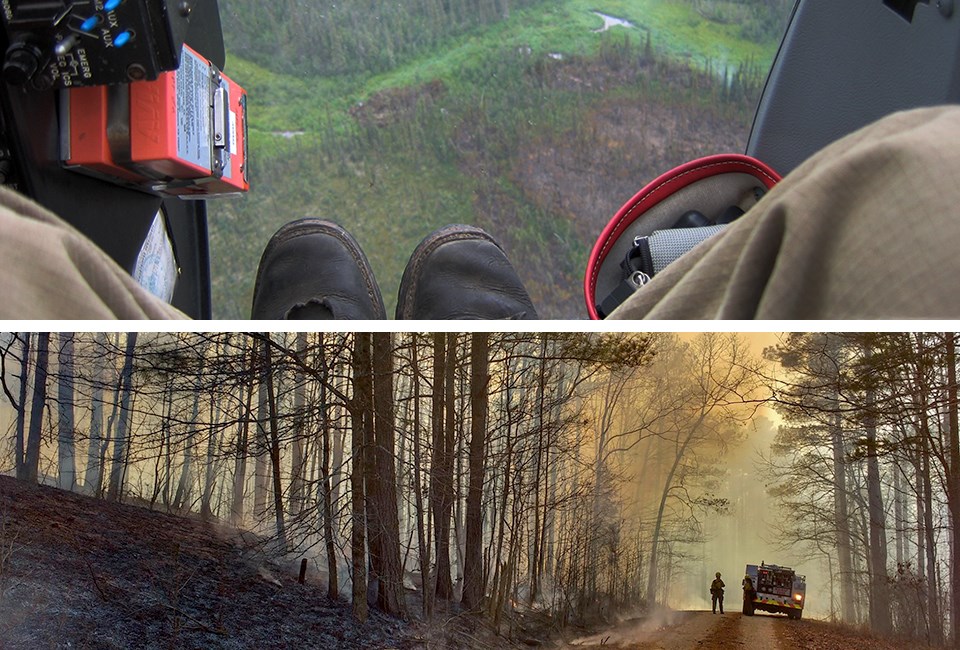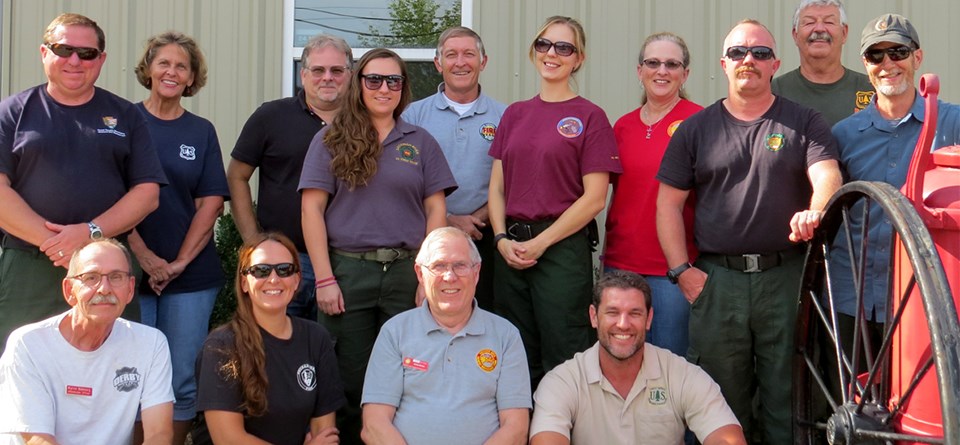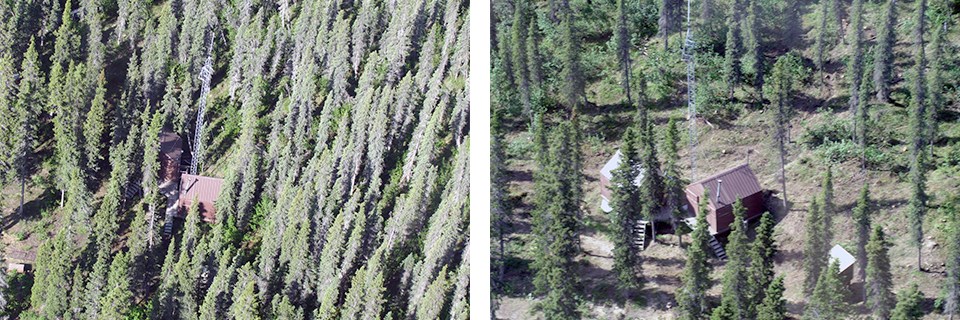
NPS
There are many different ways a wildfire may be managed depending on its location, the time of year, and other factors. A remote fire with little potential to impact human life and property may be managed through aerial observation once every few days, whereas a fire threatening homes or other infrastructure would be fully suppressed. Most fires are somewhere in between - portions may be monitored, while other portions suppressed.
In order to successfully manage fire, it takes a common language across agencies, adequate staffing, and preparation.

NPS
Incident Command System (ICS)
You have to be organized to work in fire because it takes lots of people and equipment from across the country to get the job done. We use the incident command system as a common language and set of practices to help us work together.
Responding to Fire
The National Park Service or in some parks, other agencies that have protection responsibilities, respond to every wildfire that ignites in a national park unit.

NPS
Wildland-Urban Interface
Oftentimes wildfires start near the homes and places people live and work. The wildland-urban interface (WUI) is a term used to describe a place where vegetation, like trees, shrubs, and grasses grow near human structures, like homes, stores, and offices. It can be a risky place for the firefighters to manage a fire. It takes lots of collaboration between various responders and community members to manage fire in these areas.
Smoke Management
Among the many considerations related to wildland fire, smoke management can be very challenging due to health and safety concerns.
Last updated: May 5, 2018
